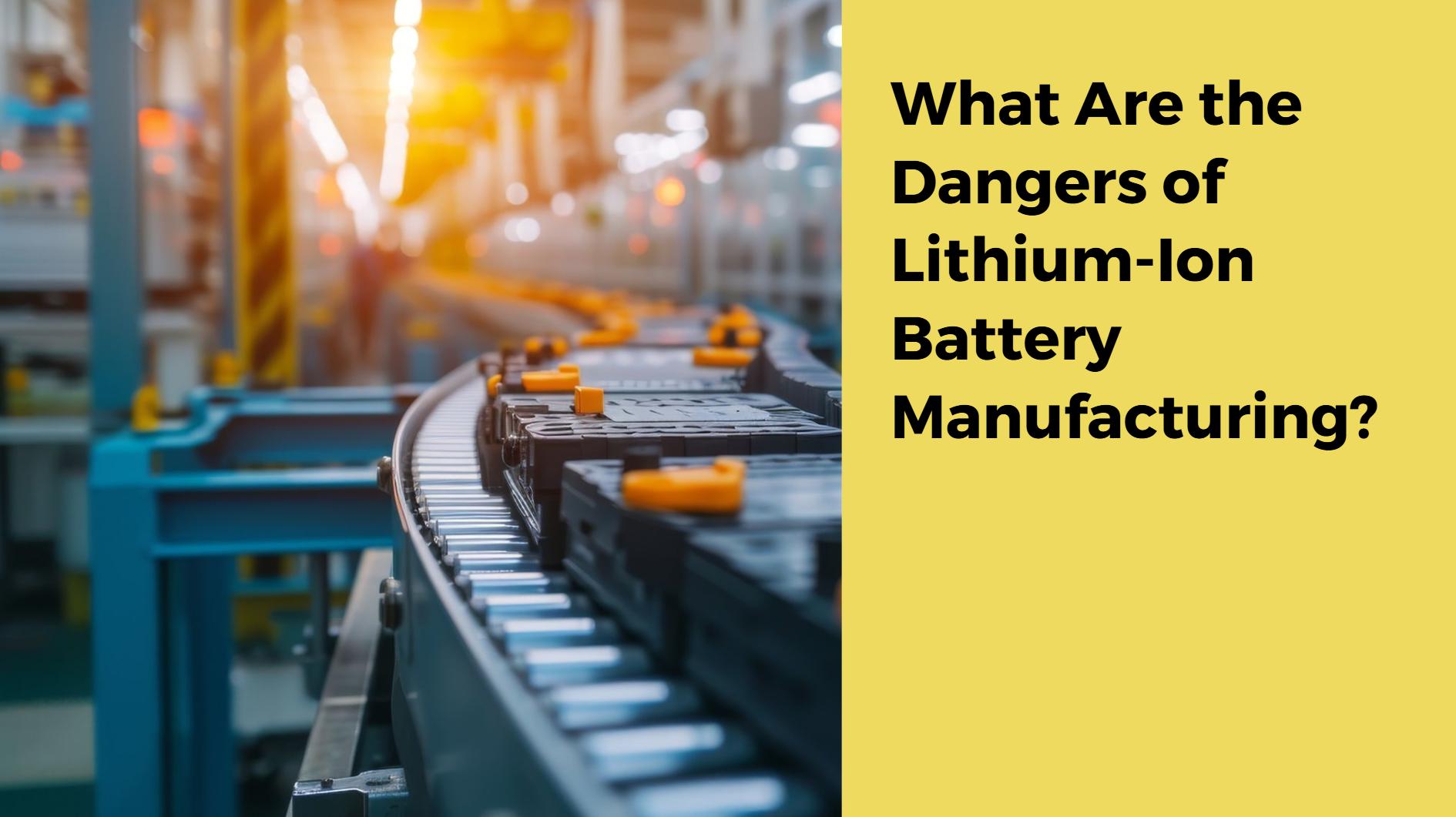
What Are the Dangers of Lithium-Ion Battery Manufacturing?
Lithium-ion battery manufacturing presents several dangers, including health risks to workers, environmental hazards from mining, and safety concerns related to thermal runaway and chemical exposure. Understanding these risks is essential for improving safety protocols and ensuring sustainable practices in battery production.
What Are the Health Risks Associated with Lithium-Ion Battery Manufacturing?
Workers involved in lithium-ion battery manufacturing face exposure to hazardous materials, including solvents, heavy metals, and corrosive chemicals. Prolonged exposure can lead to serious health issues such as respiratory problems, skin conditions, and even long-term effects like cancer. Specific risks include:
- Chemical Exposure: Workers may inhale toxic fumes or come into contact with harmful substances like lithium salts and organic solvents.
- Musculoskeletal Disorders: Repetitive tasks and improper ergonomics can lead to chronic pain and injuries.
- Mental Health Issues: High-stress environments and safety concerns can contribute to mental health challenges among workers.
Health Risks Overview
| Risk Type | Description |
|---|---|
| Chemical Exposure | Inhalation of toxic fumes and skin contact |
| Musculoskeletal Disorders | Chronic pain from repetitive tasks |
| Mental Health Issues | Stress related to safety concerns |
How Does Lithium Mining Affect the Environment?
The extraction of lithium for battery production often leads to significant environmental degradation. Key concerns include:
- Water Depletion: Lithium mining, particularly from brine sources, can deplete local water supplies, impacting ecosystems and communities.
- Deforestation: Mining operations can lead to habitat destruction and loss of biodiversity.
- Pollution: The release of toxic substances during mining can contaminate soil and water sources.
Environmental Impact Chart
| Environmental Concern | Description |
|---|---|
| Water Depletion | Over-extraction affects local ecosystems |
| Deforestation | Loss of habitats due to mining activities |
| Pollution | Contamination from mining processes |
What Safety Measures Can Be Implemented in Manufacturing?
To mitigate risks associated with lithium-ion battery manufacturing, several safety measures can be implemented:
- Strict Quality Control: Regular testing of materials and products can help identify defects early.
- Personal Protective Equipment (PPE): Providing workers with appropriate PPE reduces exposure to hazardous materials.
- Training Programs: Regular training on safe handling of chemicals and emergency response procedures is essential.
- Ventilation Systems: Proper ventilation reduces airborne contaminants in manufacturing facilities.
Safety Measures Overview
| Measure | Description |
|---|---|
| Quality Control | Regular testing for defects |
| Personal Protective Equipment | Reduces exposure risks |
| Training Programs | Educates workers on safety protocols |
| Ventilation Systems | Minimizes airborne contaminants |
What Are the Common Hazards in Lithium-Ion Battery Production?
Common hazards in lithium-ion battery production include:
- Thermal Runaway: A condition where a battery overheats uncontrollably, potentially leading to fires or explosions.
- Chemical Spills: Accidental releases of hazardous materials can pose immediate risks to workers and the environment.
- Electrical Hazards: Working with high-voltage systems increases the risk of electrical shocks.
Hazard Overview
| Hazard | Description |
|---|---|
| Thermal Runaway | Overheating leading to fires or explosions |
| Chemical Spills | Release of hazardous materials |
| Electrical Hazards | Risk of shock from high-voltage systems |
How Can Thermal Runaway Occur During Manufacturing?
Thermal runaway can occur due to several factors during lithium-ion battery manufacturing:
- Manufacturing Defects: Poor assembly or contamination can create short circuits within cells.
- Improper Handling: Mishandling of batteries during production increases the risk of damage that can trigger thermal runaway.
- Excessive Charging: Overcharging batteries can lead to overheating and subsequent thermal runaway.
Thermal Runaway Causes
| Cause | Description |
|---|---|
| Manufacturing Defects | Short circuits caused by poor assembly |
| Improper Handling | Damage during production increases risk |
| Excessive Charging | Overcharging leads to overheating |
What Regulations Are Needed to Ensure Safety?
To improve safety in lithium-ion battery manufacturing, several regulations should be considered:
- Occupational Safety Standards: Implementing strict guidelines for worker safety regarding chemical exposure and ergonomic practices.
- Environmental Regulations: Enforcing regulations that limit environmental impact during lithium extraction and battery production.
- Quality Assurance Protocols: Establishing rigorous quality control measures throughout the manufacturing process.
Regulatory Overview
| Regulation Type | Description |
|---|---|
| Occupational Safety | Guidelines for worker protection |
| Environmental Regulations | Limits on mining and manufacturing impacts |
| Quality Assurance | Standards for product testing |
Industrial News
Recent reports highlight ongoing safety concerns in lithium-ion battery manufacturing facilities, particularly regarding worker health and environmental impacts from mining practices. Companies are increasingly adopting advanced safety protocols and technologies to mitigate risks associated with thermal runaway and chemical exposure. As demand for electric vehicles rises, ensuring safe manufacturing processes is critical for sustainable growth in this sector.
Lithium Battery Manufacturer Insights
The safety of our workers is paramount in lithium-ion battery manufacturing,” stated an expert from a leading battery manufacturer. “By implementing rigorous quality controls and adhering to strict environmental regulations, we aim to minimize risks while maximizing efficiency in our production processes.”
FAQ Section
Q: What are the main health risks associated with lithium-ion battery manufacturing?
A: Workers may face exposure to harmful chemicals, respiratory issues, skin conditions, musculoskeletal disorders, and mental health challenges due to high-stress environments.Q: How does lithium mining impact the environment?
A: Lithium mining can lead to water depletion, deforestation, habitat destruction, and pollution of local ecosystems.Q: What safety measures should be implemented in battery manufacturing?
A: Key measures include strict quality control, use of personal protective equipment (PPE), regular training programs, and proper ventilation systems.Q: What causes thermal runaway in lithium-ion batteries?
A: Thermal runaway can occur due to manufacturing defects, improper handling, or excessive charging that leads to overheating.
Know more:
What Is the Biggest Cause of Lithium-Ion Batteries Exploding?
What Are the Risks Associated with Lithium Batteries?
What Are the Hazards in Battery Manufacturing?
What Are the Dangers of Lithium-Ion Battery Manufacturing?
